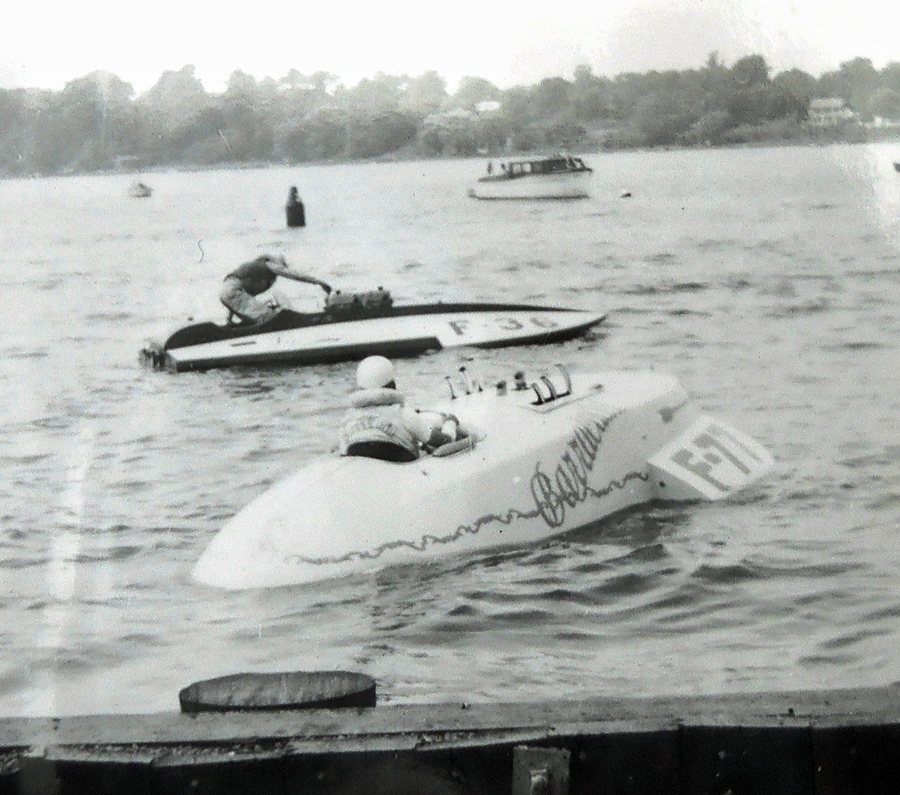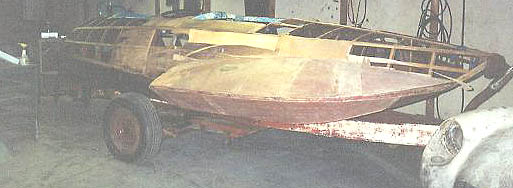
| Here she is ready to be lifted off the road trailer. |
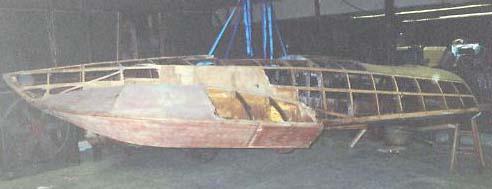
| First thing is to
hoist her off the trailer and unto the jig and ready for rstoration |
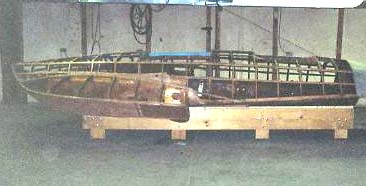
| Some of the frames have been damaged from years of
racing. |
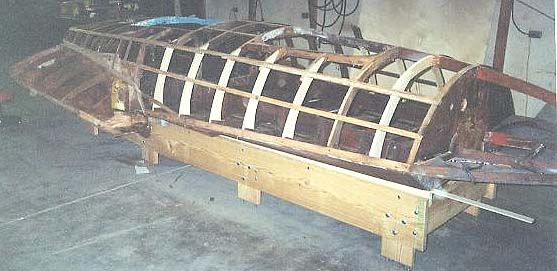
| The cockpit framing has been replaced due to some dry
rot that was found. |
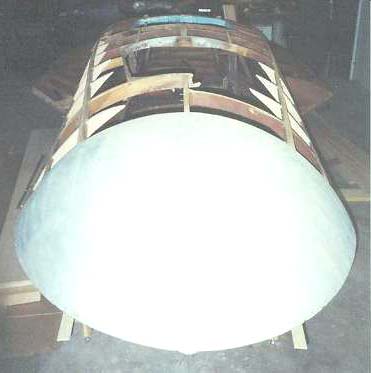 |
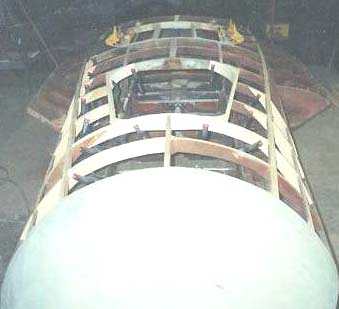 |
A new hood was
fabricated.
Photo on the left is before cockpit framing was replaced. Photo on
right has the new framing in place.
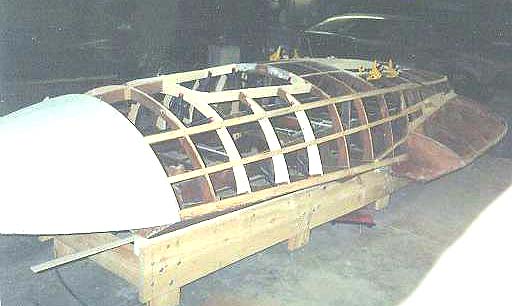
It is starting to come together.
A few more pieces left to dry fit and then permantently fasten and I
will be ready to start reskinning the hull. |
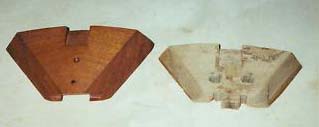
A new stem was made.
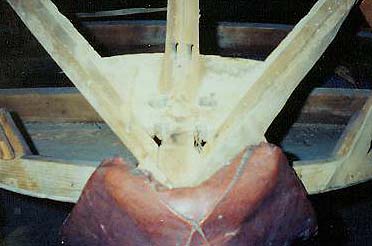
Before removing the stem.
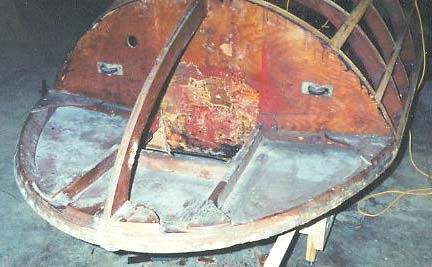
The aft section before restoration.
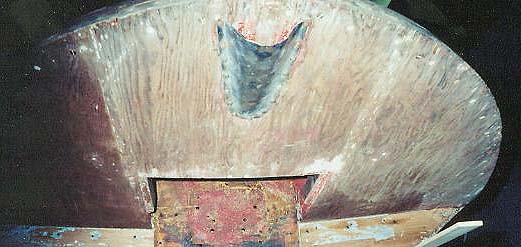
Lots of work for the bottom awaits me.
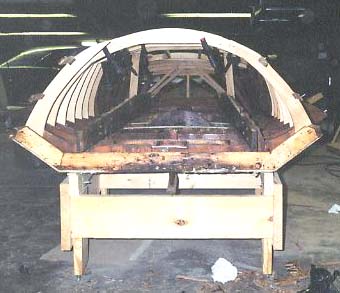
Aft removed.
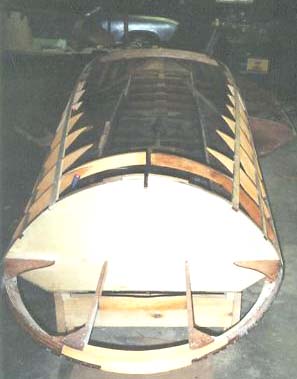
I rebuilt the transom with new marine plywood.
Everything behind the transom was stripped and I replaced any rotten or
damaged wood
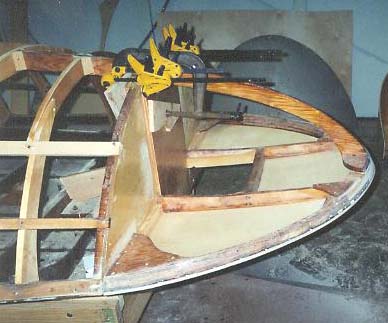
Side view
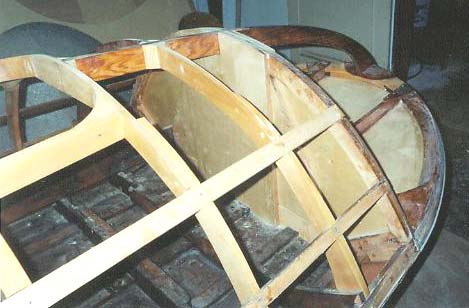
This is how it all ties together into the framing network.
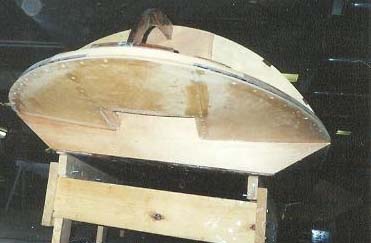
All coming together.
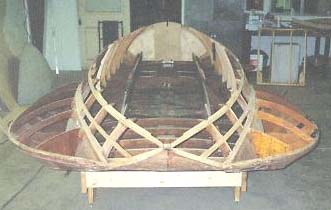
Before top framing is completed.
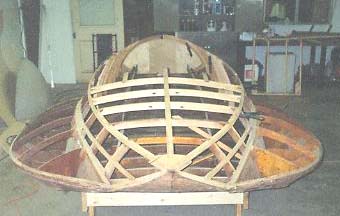
Starting to look like a boat again.
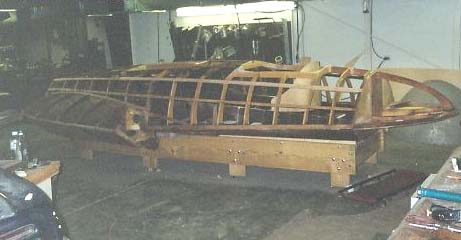
Side view shot of the progress. I found seven bottom frames that were
broken along with the the five that were cut for the motor. Already
have the seven replaced. The rest can't be done till the sponsons come
off .
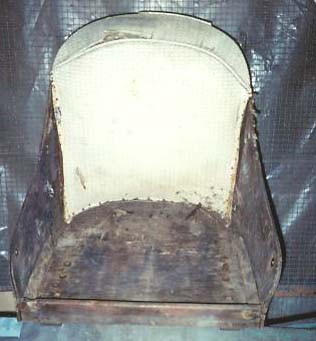
The seat before any work.
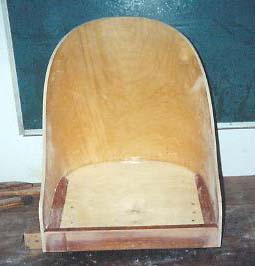
The seat has also been rebuilt using all the old componets I could
salvage.
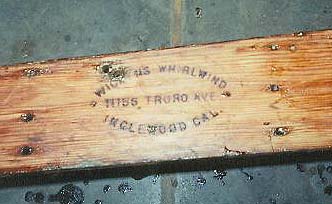
The Wickens Identification burned into the stringer.
I have been taking pictures from the start and
will have the webmaster update as I progress.
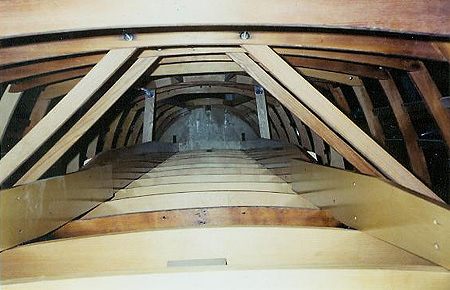
The further I got into this thing the more damage I found.
Only two of the bottom frames were worth saving the rest were broken.
Above photo from stem to stern.....
below is stern to stem.
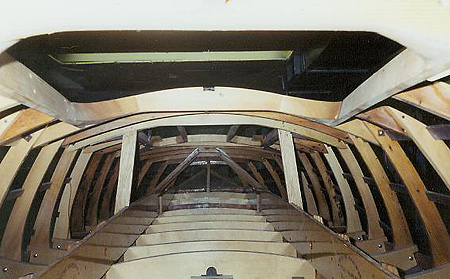
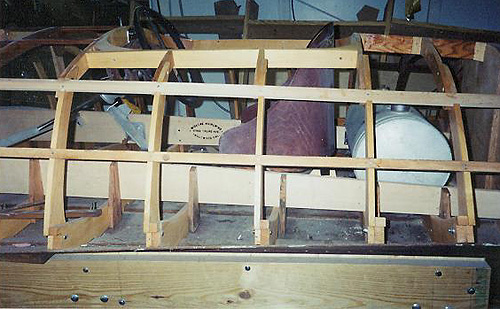
I have fit and installed most of the hardware.
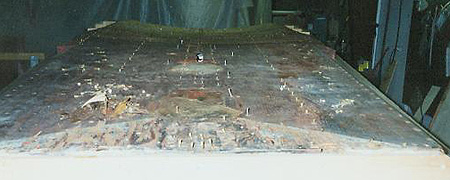
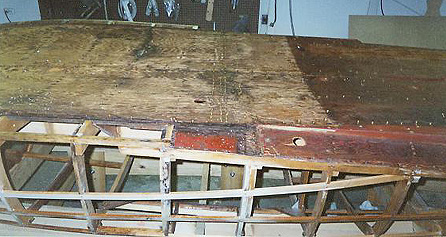
I again flipped the boat and removed the bottom.
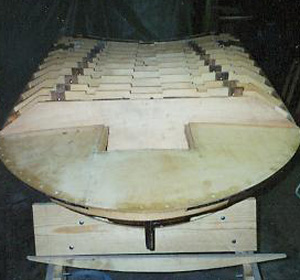
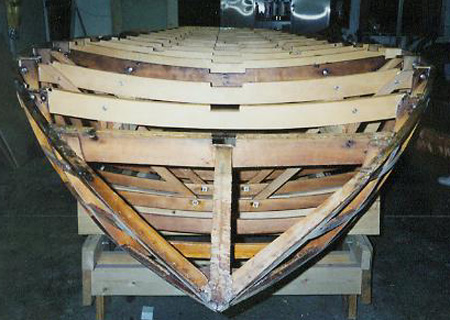
16' x 1" x 8" peice of
Sitka Spruce will be used for the keel.
Everything is removed, cleaned up and ready to fit.
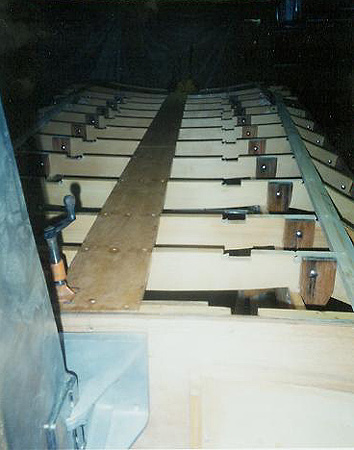 |
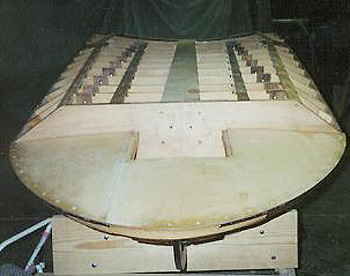
Left photo is the new keel fitted and screwed into place.
Right photo shows battens now in place.
This completes the framing on the main part of the hull. |
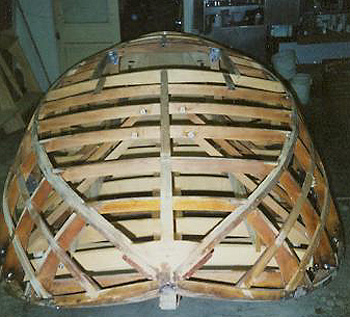
I have the side skins roughed out drilled and ready to install after
I am done with the varnish work.
I also have the dash done and all of the hardware restored and ready
to install. But I am still waiting on the crank.
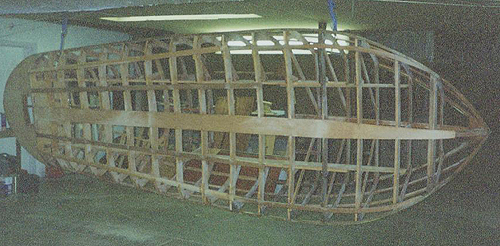
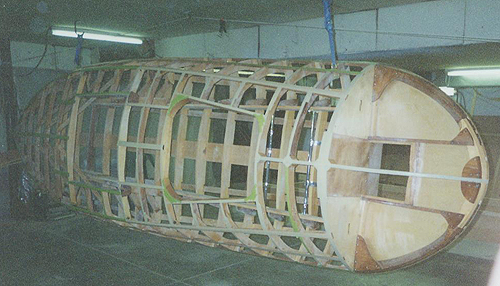
Framing of the boat is hung up and varnish is applied via spray gun.
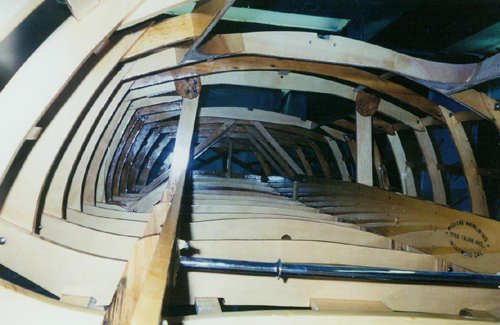
Here's the inside....note the branding. A friend of Fred Wickens still
had the original branding iron and loaned it to me.
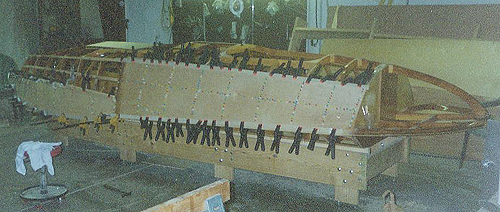
First sheet of plywood is being applied to the boat.
(All skins have now been applied....more pixs to follow)
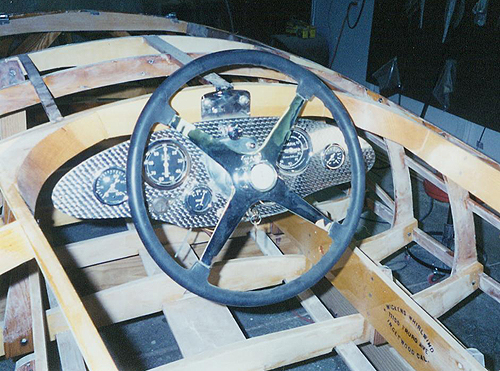
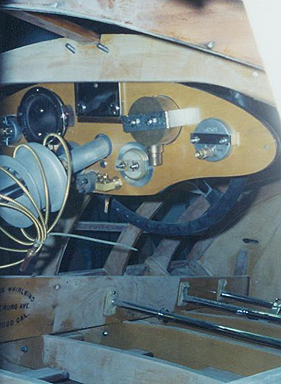
Dash/gauges have been fitted.

Here, I'm fastening the plywood on the
sides.
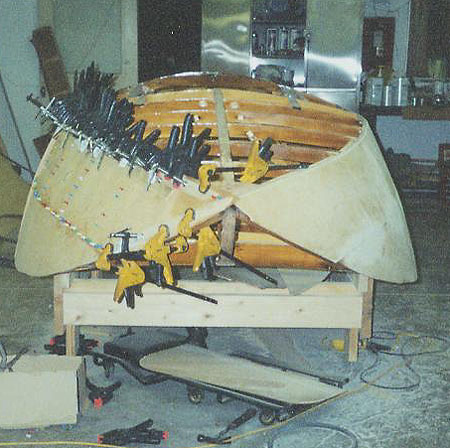
Now the other side is fastened.
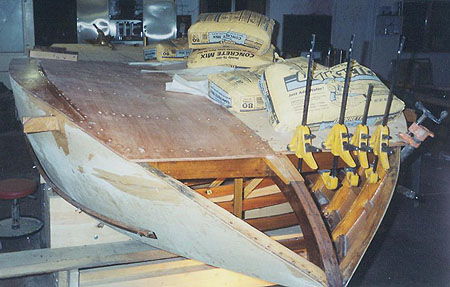
As you can see in the photo above, the
bottom is being applied next.
A very difficult task as the bottom of
this hull as many compound and convex angles.
Note the 80# bags of concrete mix being
employed to hold the bottom plywood into place
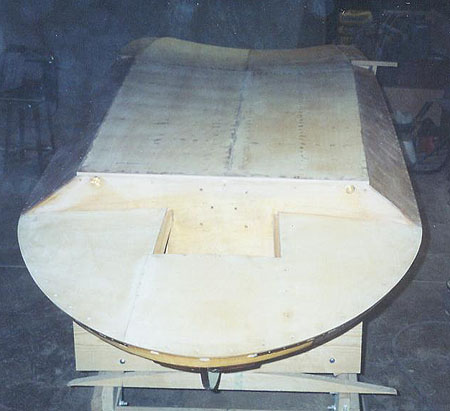
Next, the aft section of plywood is secured
into place.
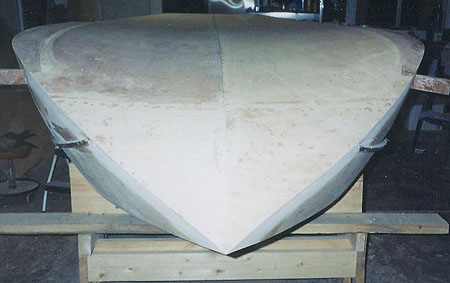
The fore section of plywood is next.
Now I can proceed to putting the sponsons
back on the hull.
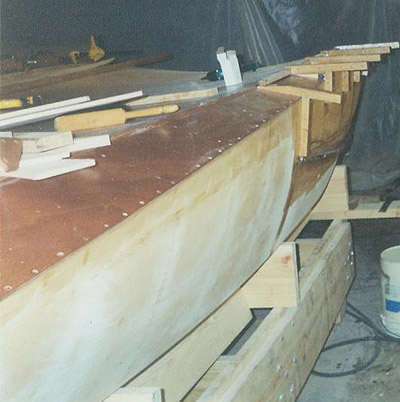
The start of the sponson frames being attched to the hull.
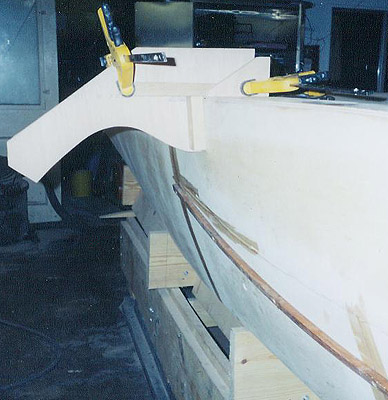
Getting everything squared up working with many different angles.
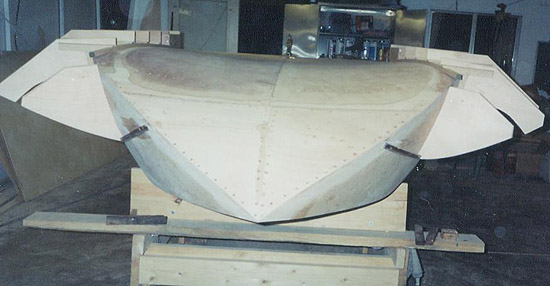
The main supports for the sponsons.
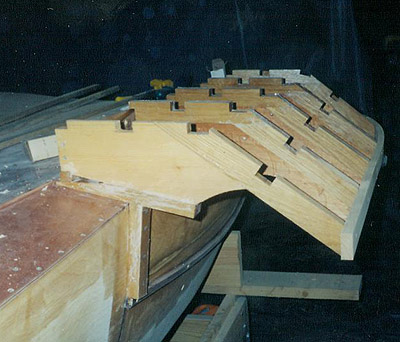
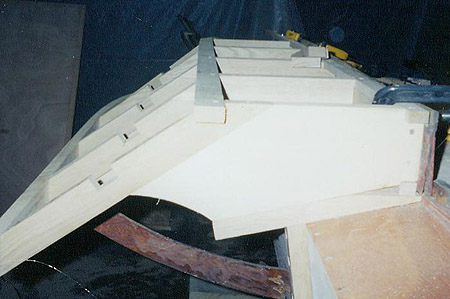
The main frames are screwed & glued to the supports.
Notches are made to accept the battens.
|
|
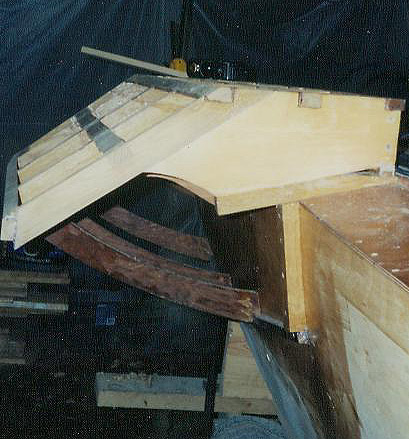
The battens are flushed in preparation for the plywood skins.
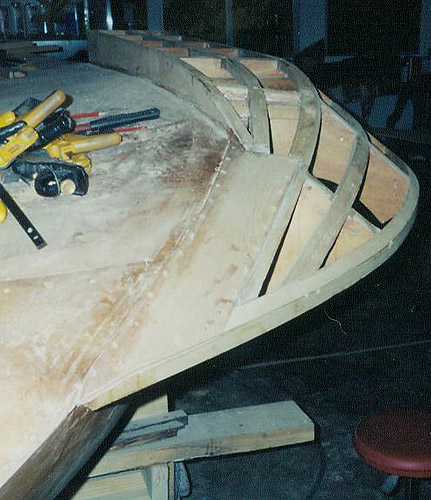
Battens in place and first sheet of plywood being attached.

The plywood sheeting attached for the sponson chines
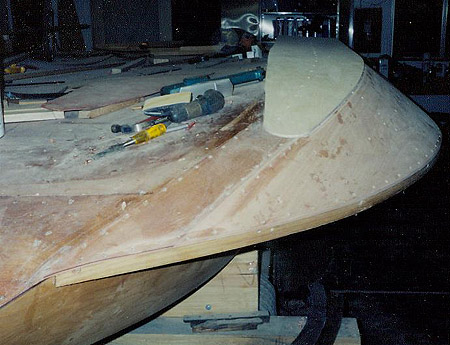
Bottom plywood attached to the sponsons.
Sponsons woodworking complete.
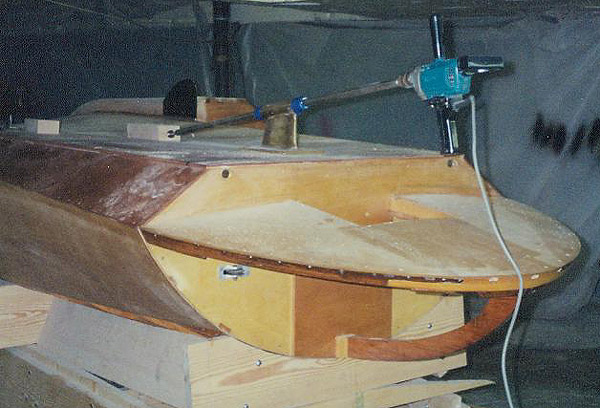
The prop shaft hole is bored.
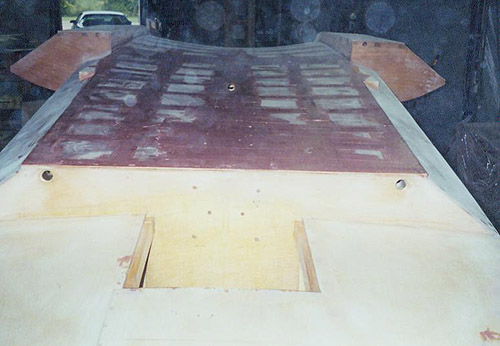
Bottom is completely finished.
As you can see, Fred Wickens had a unique bottom shape on his hull
design.
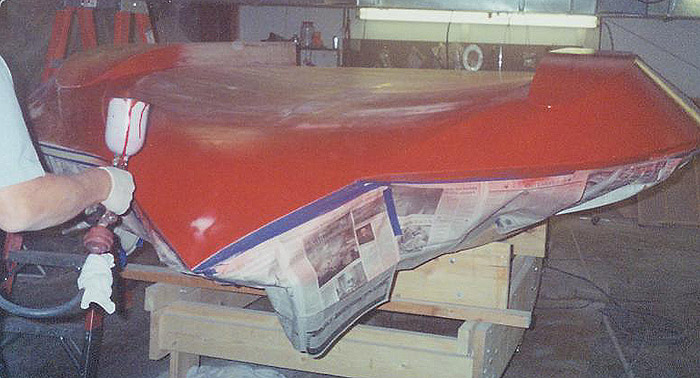
And then the fun part...after three tries the bottom is almost done.
I'm still not happy with the finish.
I will sand it one more time and paint the bottom (hopefully) one
more time?
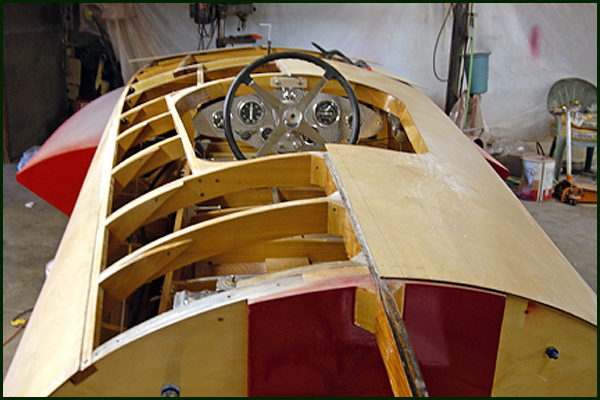
With the bottom painted the hardware installed the decks go on.
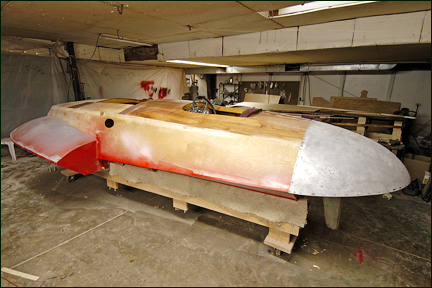
The deck installed and faired in, the rear aluminum cover fit, the
boat is prepared for paint.
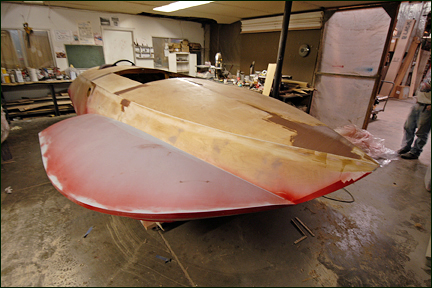
The boat is sanded and primed with a 2 part epoxy primer.
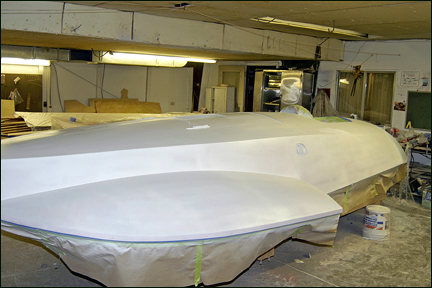
After sanding the primer with 320 the Barracuda is ready for
paint.
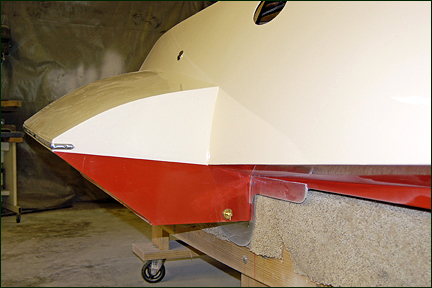
With the boat painted, all the original exterior hardware is installed.
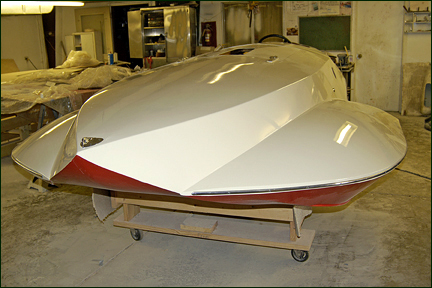
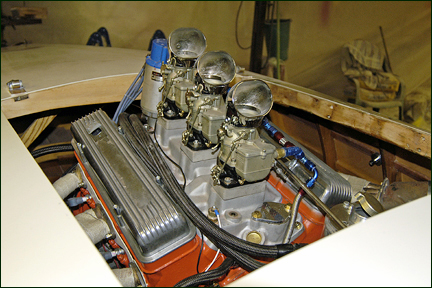
At last the 265 goes in. Everything is tightened, plumbed and wired.
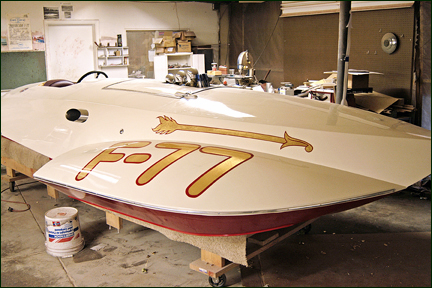
Finally, the last step of the restoration, the lettering.
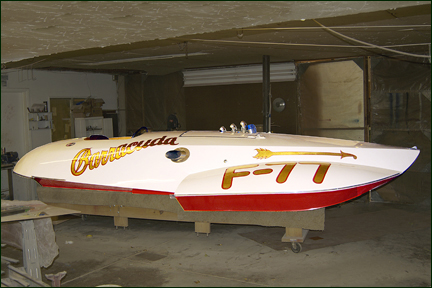
After 40 years of neglect and a two year restoration, the Barracuda is done!
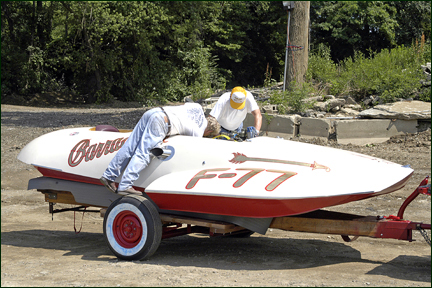
Making sure everything is in order, the Barracuda is prepared
for her first test session, 40 years to the to the day the boat had last
run.
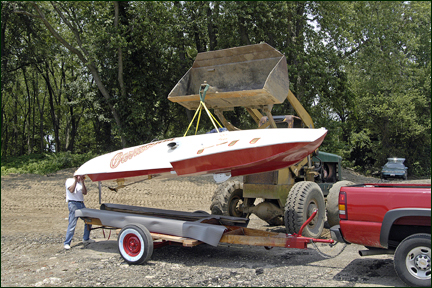
The boat is lifted off the original trailer with a front end loader
driven by Don Smith, owner of the Boatsmith Marina.
Don had built over 50 inboard hydroplanes in the 1940-50's.
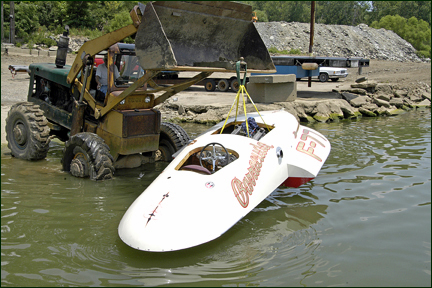
Don then drives the front loader into the river.
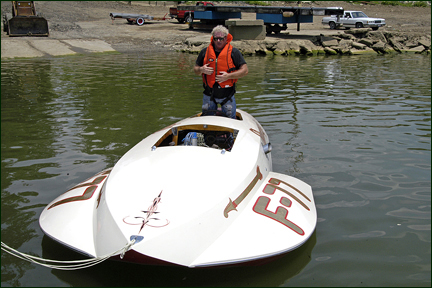
My heart pounding, and butterflies in my stomach, I am ready for the
ride of my life!
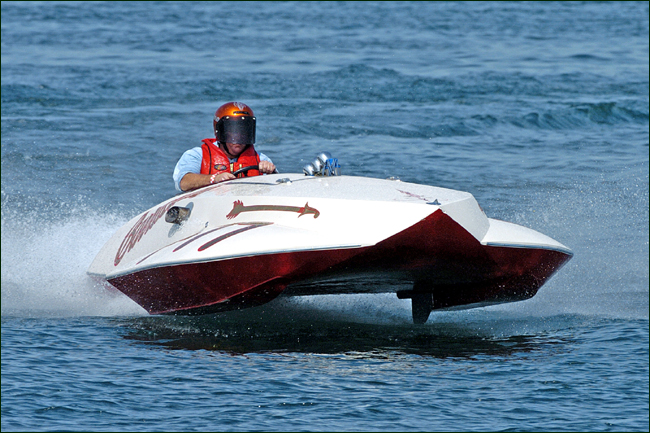
Other than A few minor problems, the boat worked and ran great for
the first time out.
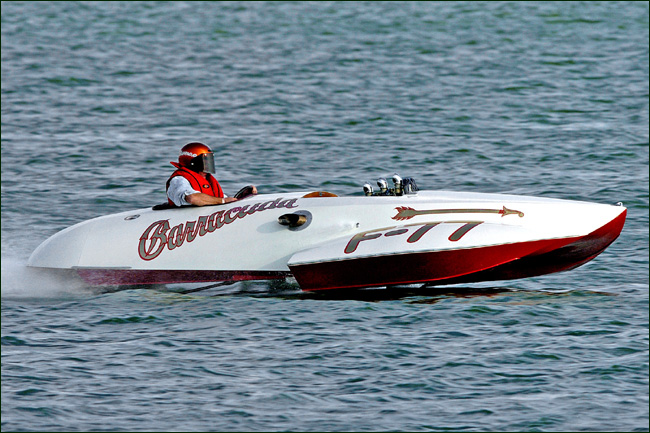
After a few slow test runs, it was time to see what the Barracuda would do.
WOW!!! If you could only see the smile on my face!
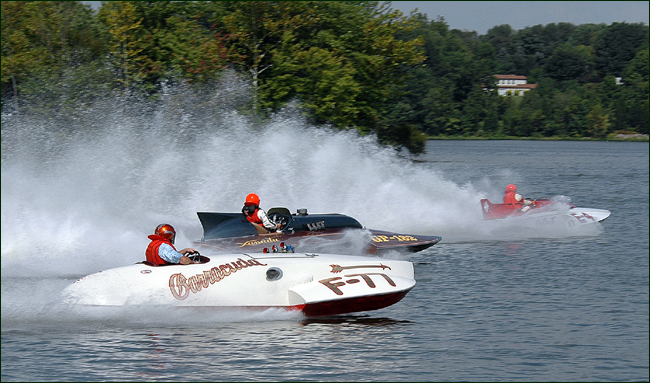
Running with the big dogs at Hillsboro, Ohio.
E-4, owned by Gary Vore, driven by Ron Snyder on the inside
Xanadu with Travis Hickman,
Barracuda Tim Settle driving,
and on the outside (not seen) is Bill Fisk driving the Irishman
GP-317
A special thanks to Gary Vore for his time and help with the restoration.
Jack Hines for answering alot of tech questions and machine work.
Kevin Burkett for machine work.
A special thanks to Phil Kunz for the time, information, history and
photos.
All photos on this page by Phil Kunz.
If it wasn't for Phil, the boat would still be sitting in the barn
gathering dust and a condo for raccoons.
Thanks for the time of my life !!!
© Tim Settle
Back to the
boats |
